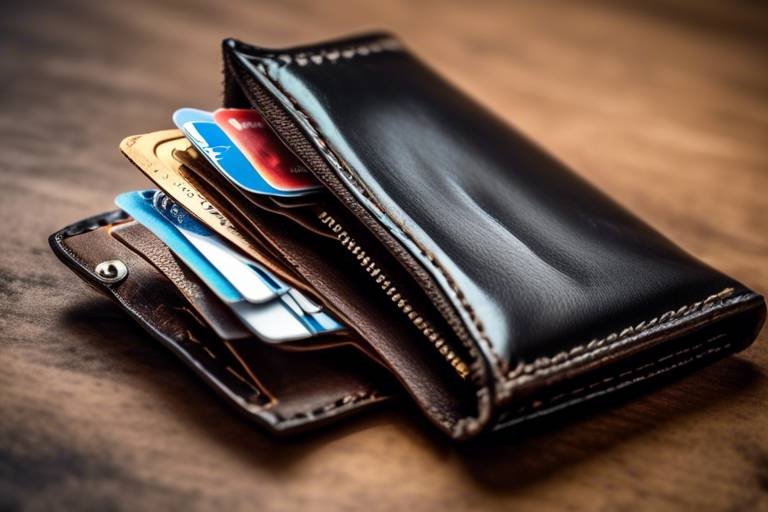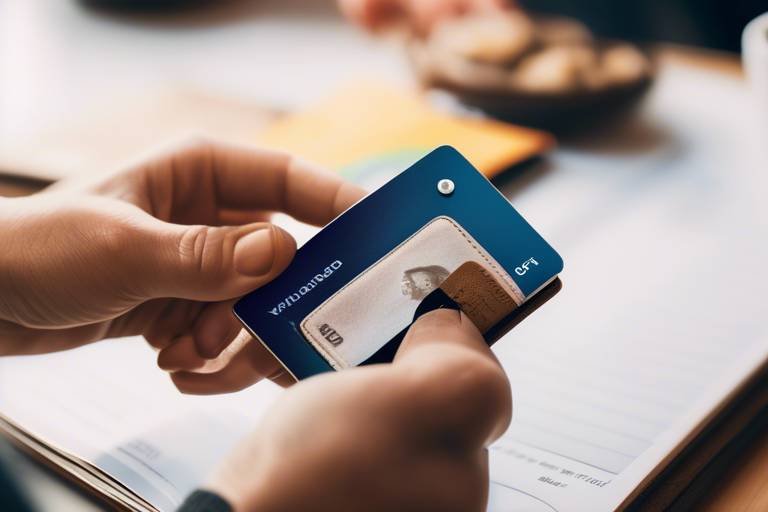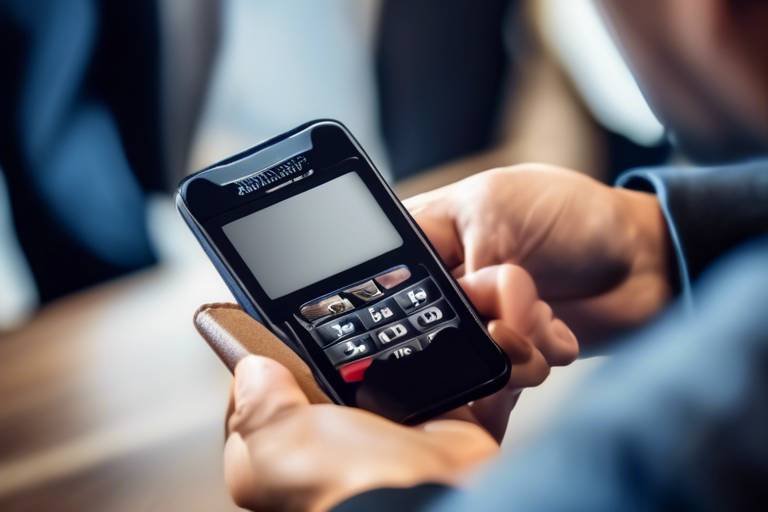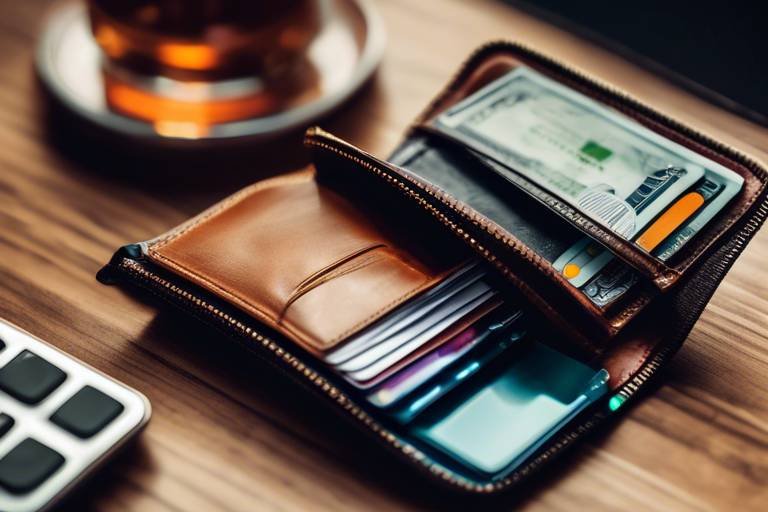The Importance of Using Strong Passwords for Exchanges
In today's digital landscape, where our lives are increasingly intertwined with technology, the importance of using strong passwords cannot be overstated. With the rise of online exchanges—where users trade cryptocurrencies and sensitive financial information—the stakes are higher than ever. Imagine your bank account being emptied because of a weak password; it’s a nightmare scenario that can easily become a reality if we don’t take password security seriously. Strong passwords are not just a recommendation; they are a necessity for safeguarding your assets and personal information.
When you think about it, a password is like the key to your digital home. Just as you wouldn’t use a flimsy key to protect your valuables, you shouldn’t rely on weak passwords to guard your online accounts. A strong password acts as a formidable barrier against cybercriminals, preventing unauthorized access to your sensitive data. But what exactly makes a password strong? It’s all about complexity and unpredictability. A strong password typically includes a mix of uppercase and lowercase letters, numbers, and special characters. The longer the password, the better. Think of it like building a fortress; the more layers you add, the harder it is for intruders to break in.
Unfortunately, many users underestimate the risks associated with weak passwords. They often opt for easily memorable passwords, such as "123456" or "password," which are the digital equivalent of leaving your front door wide open. This lax approach to password security can have dire consequences, especially for exchanges where financial transactions take place. Cybercriminals are always on the lookout for vulnerabilities, and weak passwords are like a neon sign pointing them in the right direction.
In the following sections, we will delve deeper into the characteristics that make a password strong, explore the common vulnerabilities associated with poor password practices, and highlight the best practices for creating robust passwords. By the end of this article, you’ll understand not only why strong passwords are crucial but also how to implement effective password strategies that can safeguard your online exchanges.
A strong password is essential for safeguarding sensitive information. It should be long, complex, and unique to each account. The characteristics that make a password strong include:
- Length: Aim for at least 12-16 characters.
- Complexity: Use a mix of letters, numbers, and symbols.
- Unpredictability: Avoid common words or easily guessable information.
- Uniqueness: Never reuse passwords across multiple accounts.
These traits are critical in protecting accounts from unauthorized access. Think of your password as a secret recipe; if someone gets their hands on it, they can replicate your success—or in this case, access your funds.
Many users fall into the trap of using weak passwords. This section discusses the most common vulnerabilities associated with poor password practices and the potential consequences for exchanges. One of the biggest mistakes people make is using personal information, such as birthdays or pet names, in their passwords. This information is often publicly available on social media, making it easy for attackers to guess.
Weak passwords can lead to unauthorized access and significant financial losses. For instance, consider a scenario where a hacker gains access to an exchange account due to a weak password. The aftermath can be devastating, not just for the individual but for the entire exchange platform. In some cases, hackers have stolen millions of dollars worth of cryptocurrencies simply because users failed to secure their accounts adequately.
Analyzing specific case studies reveals the devastating effects of password breaches. For example, the infamous Mt. Gox incident in 2014 highlighted the vulnerabilities in password security. The exchange lost approximately 850,000 Bitcoins due to a combination of weak passwords and inadequate security measures. This incident serves as a stark reminder of the importance of strong password practices.
Statistics can provide insight into the prevalence of weak passwords. A recent study found that over 80% of data breaches are linked to weak or stolen passwords. This alarming statistic underscores the importance of strong password practices in the context of exchanges.
Creating strong passwords is a proactive measure that every user should take seriously. Here are some actionable tips and guidelines for users to enhance their password security effectively:
- Use a password generator to create complex passwords.
- Change passwords regularly, at least every three to six months.
- Enable password recovery options that do not rely on easily guessable information.
Password managers can simplify the process of creating and storing strong passwords. These tools generate complex passwords for you and store them securely, so you don’t have to remember each one. This way, you can focus on creating unique passwords for every account without the hassle of memorization.
Not all password managers are created equal. When selecting one, consider features such as:
- Encryption standards to protect your data
- User-friendly interface
- Cross-platform compatibility
Two-factor authentication (2FA) adds an extra layer of security. It requires not only a password but also a second factor, such as a text message code or authentication app, to access your account. This means that even if someone manages to crack your password, they would still need that second factor to gain access, making it significantly harder for cybercriminals to compromise your accounts.
Q: What is a strong password?
A strong password is typically at least 12 characters long and includes a mix of uppercase and lowercase letters, numbers, and special characters.
Q: How often should I change my passwords?
It’s advisable to change your passwords every three to six months, or immediately if you suspect a breach.
Q: What is two-factor authentication?
Two-factor authentication is an additional security layer that requires not only your password but also a second form of verification, such as a text message or authentication app.
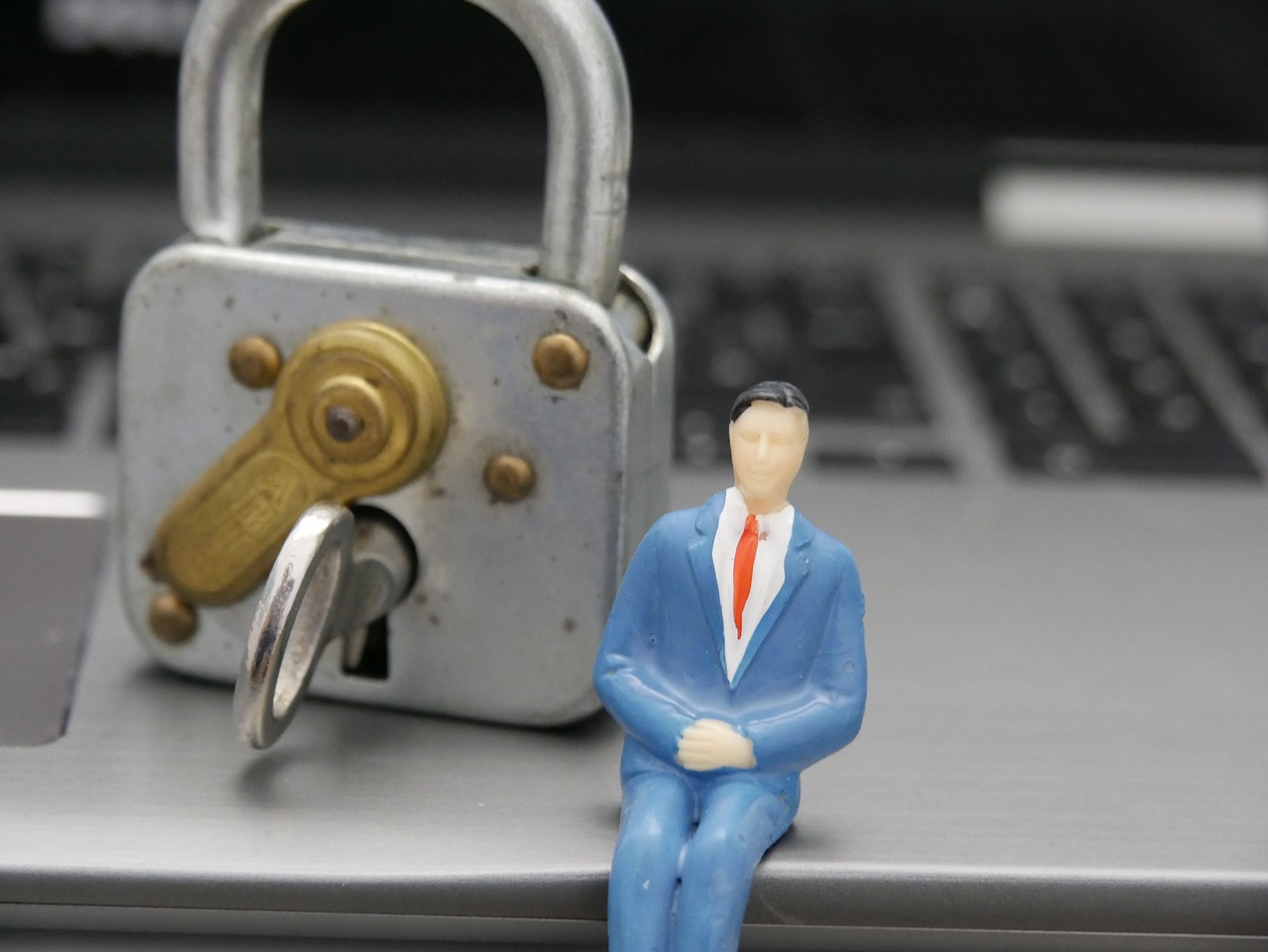
Understanding Password Strength
A strong password is your first line of defense against unauthorized access to your sensitive information. Imagine your password as a key to a vault; if it's weak, it's like using a flimsy lock that anyone can pick. So, what exactly makes a password strong? Let's break it down.
First and foremost, a strong password should be long. The longer your password, the more difficult it is for attackers to crack it. Experts recommend using at least 12 to 16 characters. Additionally, a mix of uppercase and lowercase letters, numbers, and special characters can significantly improve the strength of your password. For instance, instead of using "password123", try something like "P@ssw0rd!2023". This combination makes it much harder for automated tools to guess your password.
Another critical characteristic is unpredictability. Avoid using easily guessable information such as your name, birthday, or common words. Think of it like creating a secret code that only you understand. You can use a passphrase—a string of random words or a sentence that is easy for you to remember but hard for others to guess. For example, "BlueSky$Flying!2023" is both memorable and secure.
Moreover, a strong password should be unique for each account. Reusing passwords is like using the same key for all your locks; if one gets compromised, all your accounts are at risk. To help visualize this, consider the following table:
| Weak Password | Strong Password |
|---|---|
| password123 | P@ssw0rd!2023 |
| johnsmith | J0hn$M1th!2023 |
| 12345678 | !2Secure4Me@2023 |
In summary, a strong password is not just a random assortment of characters; it embodies length, complexity, unpredictability, and uniqueness. By investing time in creating strong passwords, you're not just protecting your accounts; you're safeguarding your personal and financial information against potential threats.
Now that we've established what makes a password strong, it's essential to understand the risks associated with weak passwords. Stay tuned as we dive into the vulnerabilities that many users fall prey to and how these can lead to significant consequences.

Common Password Vulnerabilities
Many users fall into the trap of using weak passwords, often underestimating the importance of a robust password strategy. It's all too common to see people relying on easily guessable passwords like "123456" or "password." These choices might seem convenient, but they are akin to leaving your front door wide open, inviting intruders in. Weak passwords are not just a minor inconvenience; they can lead to devastating consequences, especially in the realm of exchanges where large sums of money and sensitive data are at stake.
One of the biggest vulnerabilities stems from the tendency to reuse passwords across multiple accounts. Imagine having a single key that opens every door in your house. If that key falls into the wrong hands, every room is compromised. Similarly, when users recycle passwords, a breach in one service can lead to a domino effect, allowing hackers to access other accounts with the same credentials. This practice significantly increases the risk of unauthorized access, making it imperative for users to create unique passwords for each platform.
Another common vulnerability is the use of personal information in passwords. Many people think that incorporating their name, birthdate, or pet's name makes their password strong. Unfortunately, this is a misconception. Cybercriminals often use social engineering tactics to gather personal information, making it remarkably easy for them to crack such passwords. In fact, studies have shown that passwords containing personal information can be guessed within seconds using simple algorithms.
Moreover, the rise of sophisticated hacking tools has made it easier than ever for attackers to exploit weak passwords. Tools that can run through millions of password combinations in seconds are readily available on the dark web. This means that even a moderately complex password can be compromised if it lacks the necessary strength. To illustrate this point, consider the following table that highlights the time it takes to crack various types of passwords:
| Password Type | Estimated Time to Crack |
|---|---|
| Simple (e.g., "123456") | Instant |
| Moderate (e.g., "Password123") | Less than 1 minute |
| Complex (e.g., "7gT!p$2vQ") | Years |
As you can see, the difference in password strength can mean the difference between instant access for a hacker and a fortress-like defense. It's crucial to recognize these vulnerabilities and take proactive steps to safeguard your accounts. The consequences of ignoring password security can be dire, leading to financial loss, identity theft, and a tarnished reputation.
In conclusion, understanding common password vulnerabilities is the first step in bolstering your security. By avoiding weak passwords, not reusing credentials, and steering clear of personal information in your passwords, you can significantly reduce the risk of unauthorized access to your exchange accounts. Remember, a strong password is your first line of defense against cyber threats.
- What makes a password strong? A strong password typically contains a mix of uppercase letters, lowercase letters, numbers, and special characters, and is at least 12 characters long.
- How often should I change my passwords? It's advisable to change your passwords every three to six months, or immediately if you suspect a breach.
- Are password managers safe? Yes, password managers are generally safe as they encrypt your passwords and help you create strong, unique passwords for each account.
- What is two-factor authentication? Two-factor authentication (2FA) adds an extra layer of security by requiring a second form of verification, such as a text message code, in addition to your password.

Impact of Weak Passwords
Weak passwords are like leaving the front door of your house wide open; it invites trouble and can lead to catastrophic consequences. When users opt for simple, easily guessable passwords, they not only jeopardize their own security but also that of the entire exchange platform. Imagine a hacker using a common tool that can crack passwords in mere seconds—this is the reality many exchanges face daily. The fallout from such breaches can be devastating, resulting in unauthorized access, financial losses, and a tarnished reputation.
To illustrate the gravity of the situation, consider this: a study revealed that over 80% of hacking-related breaches are due to weak or stolen passwords. This staggering statistic highlights how crucial it is for users to understand the impact of their password choices. Weak passwords can lead to a domino effect, where one compromised account can enable hackers to infiltrate others, particularly in interconnected systems.
Real-world examples abound, showcasing the dire outcomes of weak password practices. For instance, in 2019, a major cryptocurrency exchange suffered a breach that resulted in the loss of over $40 million due to attackers exploiting weak passwords. In this case, hackers used a combination of brute force attacks and social engineering tactics to gain access. The aftermath was not just financial; it led to a significant loss of user trust and a decline in the platform's market position.
Furthermore, the psychological toll on users cannot be overlooked. After a breach, users often feel violated and anxious about their sensitive information being exposed. This environment fosters a sense of vulnerability, making users less likely to engage with the exchange or trust it in the future. The potential for identity theft and further financial loss looms large, leaving users in a state of constant worry.
In conclusion, the impact of weak passwords extends far beyond individual accounts. It poses a serious threat to the integrity of entire exchanges, leading to financial losses, reputational damage, and a pervasive sense of insecurity among users. The lesson is clear: investing time and effort into creating strong, unique passwords is not just a personal responsibility; it’s a crucial step in safeguarding the broader digital ecosystem.

Case Studies of Breaches
When it comes to understanding the significance of strong passwords, examining real-world case studies can be incredibly enlightening. Let's take a closer look at some notorious breaches that occurred due to weak password practices, revealing the serious implications that can arise from a seemingly simple mistake.
One of the most infamous cases is the Mt. Gox incident, which occurred in 2014. At its peak, Mt. Gox was handling over 70% of all Bitcoin transactions worldwide. However, the exchange filed for bankruptcy after losing approximately $450 million worth of Bitcoin, primarily due to weak security measures, including poor password management. The attackers exploited the exchange's vulnerabilities, gaining unauthorized access to wallets and siphoning off vast amounts of cryptocurrency. This incident not only devastated investors but also shook the entire cryptocurrency market, leading to increased scrutiny on security practices across exchanges.
Another notable example is the Bitfinex hack in 2016, where hackers made off with 120,000 Bitcoins, valued at around $72 million at the time. The breach was attributed to a combination of weak passwords and inadequate security protocols. Although the exchange had implemented some security measures, they were not enough to thwart the determined attackers. This incident highlighted the importance of robust password policies and the catastrophic consequences of neglecting them.
In addition to these high-profile breaches, there are countless smaller incidents that go unnoticed but still emphasize the risks associated with poor password practices. For instance, a recent study revealed that around 80% of data breaches involved compromised passwords. Many users still rely on simple passwords, such as "123456" or "password," which are incredibly easy for hackers to guess. This alarming trend underscores the need for better education around password security.
To further illustrate the impact of weak passwords, consider the following statistics:
| Incident | Year | Losses | Weaknesses |
|---|---|---|---|
| Mt. Gox | 2014 | $450 million | Poor password management |
| Bitfinex | 2016 | $72 million | Weak passwords and security protocols |
| Yahoo Data Breach | 2013-2014 | 3 billion accounts | Weak security measures |
These case studies serve as a stark reminder of the potential fallout from poor password practices. They illustrate not only the financial losses but also the erosion of trust in exchanges and the broader cryptocurrency ecosystem. As we delve deeper into the world of digital finance, it's crucial to recognize that a strong password is not just a personal safeguard; it's a vital component of the security framework that protects entire platforms and their users.
Ultimately, the lessons learned from these breaches emphasize the necessity of adopting strong password policies and remaining vigilant against evolving threats. By prioritizing password security, users can contribute to a safer exchange environment and protect their valuable assets.
- What constitutes a strong password? A strong password typically includes a mix of upper and lower case letters, numbers, and special characters, and should be at least 12 characters long.
- How often should I change my passwords? It is recommended to change your passwords every 3 to 6 months, or immediately if you suspect any unauthorized access.
- Can password managers really improve my security? Yes, password managers can help create, store, and manage strong passwords, reducing the risk of using weak passwords across multiple accounts.
- What is two-factor authentication (2FA)? 2FA is an additional security layer that requires not only your password but also a second form of verification, such as a text message or authentication app.

Statistics on Password Security
When it comes to password security, the numbers tell a compelling story. According to recent research, a staggering 81% of data breaches are caused by weak or stolen passwords. This statistic alone should send shivers down the spine of anyone who underestimates the importance of a strong password. In fact, a study conducted by Verizon revealed that 63% of confirmed data breaches involved leveraging weak credentials. These figures highlight a critical reality: many users simply don’t take password security seriously enough.
Furthermore, a survey by LastPass found that 59% of people reuse passwords across multiple accounts, which significantly increases the risk of a domino effect in case one of those accounts is compromised. Imagine this: if a hacker gains access to your email account, they could easily reset passwords for your bank, social media, and even cryptocurrency exchange accounts, all because you used the same password. This alarming trend underscores the necessity of unique, strong passwords for every platform you use.
To further illustrate the state of password security, consider the following statistics:
| Statistic | Percentage |
|---|---|
| Users who believe their passwords are secure | 45% |
| Users who have experienced a password-related breach | 30% |
| Users who use a password manager | 25% |
These statistics reveal a significant gap between perception and reality. While 45% of users feel confident about their password security, nearly 30% have faced breaches related to their passwords. This disconnect highlights the need for education and awareness regarding password practices. The fact that only 25% of users utilize password managers suggests that many are still navigating the treacherous waters of password creation and management without adequate tools.
In conclusion, the statistics on password security paint a clear picture: weak passwords are a prevalent issue that can lead to devastating consequences. By understanding these numbers, users can better appreciate the urgency of adopting robust password strategies. Remember, a strong password is your first line of defense against cyber threats.
- What constitutes a strong password? A strong password typically includes a mix of uppercase and lowercase letters, numbers, and special characters, and should be at least 12-16 characters long.
- How often should I change my passwords? It's advisable to change your passwords every 3-6 months, or immediately if you suspect a breach.
- Are password managers safe to use? Yes, reputable password managers use strong encryption to protect your passwords, making them safer than trying to remember them all yourself.
- What is two-factor authentication (2FA)? 2FA is an additional security layer that requires not just a password but also a second form of verification, such as a text message or authentication app.
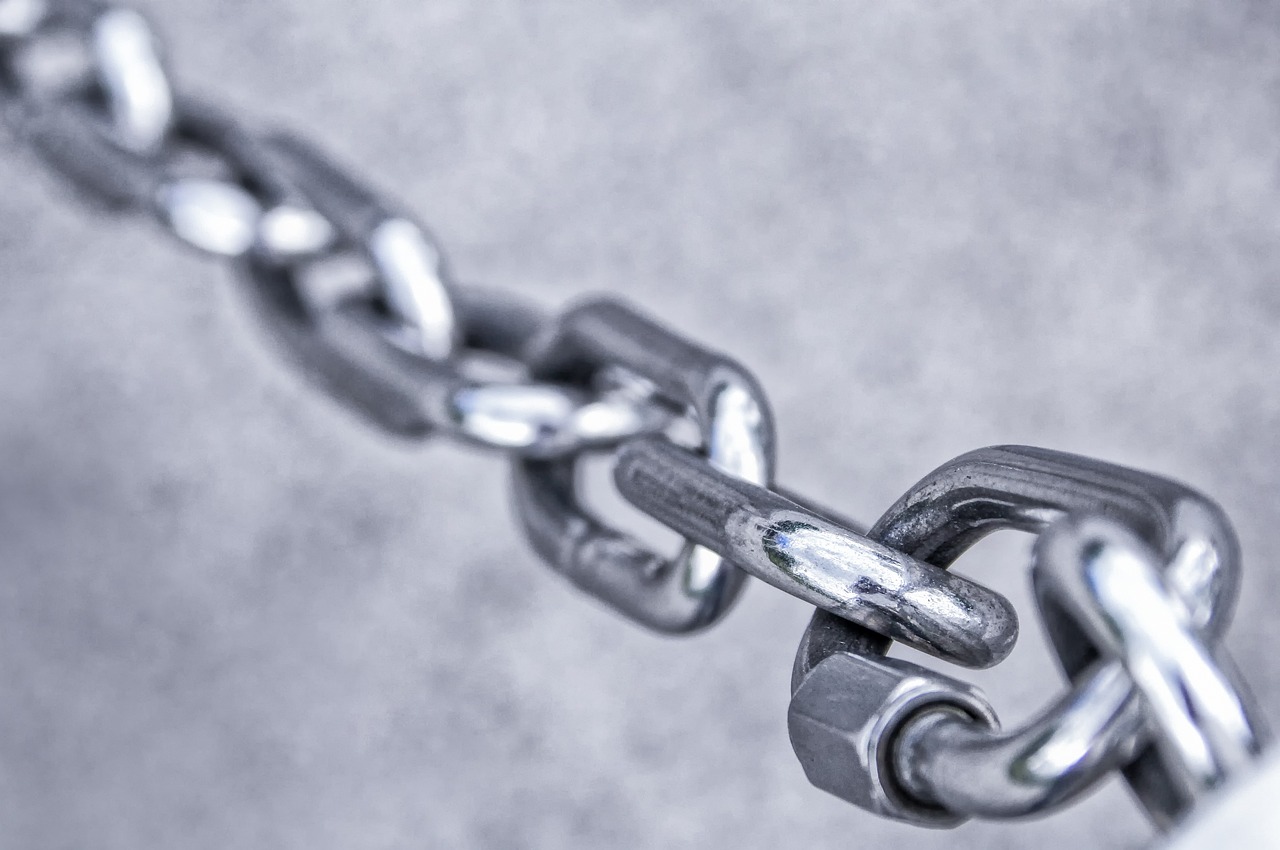
Best Practices for Creating Strong Passwords
Creating strong passwords is not just a good idea; it's a necessity in today's digital landscape. Think of your password as the key to your castle—if it's weak, you're inviting unwanted guests in. So, how do you forge a password that’s tough to crack? Here are some essential strategies to consider. First, aim for a minimum of 12 characters. The longer your password, the harder it is for hackers to guess. Combine uppercase and lowercase letters, numbers, and special characters to create a more complex combination. For example, instead of using "Password123", you might use "P@ssw0rd!2023".
Another important practice is to avoid using easily obtainable information. Many people use birthdays, names of pets, or even their favorite sports teams as passwords. While these might be memorable, they can also be easily guessed or found through social media. Instead, think creatively! Use phrases or sentences that mean something to you but are not obvious to others. For instance, "MyDogLovesToPlayFetch!" is much stronger than "Fido123".
It’s also wise to implement unique passwords for each of your accounts. Yes, it can be a hassle to remember them all, but using the same password across multiple sites is like using the same key for your house, car, and office. If one gets compromised, all your other accounts are at risk. To make this easier, consider using a password manager. These tools can generate and store complex passwords securely, allowing you to focus on other aspects of your digital life.
Additionally, change your passwords regularly. Just like you wouldn't wear the same outfit every day, your passwords should be refreshed periodically. Set a reminder to update your passwords every three to six months. This simple act can significantly reduce the risk of unauthorized access to your accounts.
Lastly, always be cautious of phishing attempts. Even the strongest password can be compromised if you inadvertently provide it to a scammer. Always verify the source before entering your credentials, especially in emails or messages that seem suspicious. If something feels off, trust your instincts and double-check.
In summary, creating strong passwords is like building a fortress around your digital life. By following these best practices, you can significantly enhance your security and protect yourself from potential threats. Remember, the effort you put into creating a strong password today can save you from headaches tomorrow.
- What makes a password strong? A strong password typically contains at least 12 characters, includes a mix of letters, numbers, and symbols, and does not use easily guessed information.
- How often should I change my passwords? It's advisable to change your passwords every three to six months to maintain security.
- Are password managers safe? Yes, reputable password managers use strong encryption to keep your passwords secure and can help you generate complex passwords.
- What is two-factor authentication? Two-factor authentication (2FA) adds an extra layer of security by requiring a second form of verification, such as a code sent to your phone, in addition to your password.

Utilizing Password Managers
In today's digital age, where our lives are intertwined with technology, the need for robust password management has never been more crucial. Password managers are tools designed to help users create, store, and manage their passwords securely. Imagine having a personal vault where all your sensitive information is locked away, accessible only to you. This is exactly what a password manager offers. Instead of juggling multiple passwords—each one more complicated than the last—these tools allow you to generate and store strong passwords effortlessly.
One of the primary benefits of using a password manager is that it eliminates the temptation to use weak passwords or reuse the same password across different accounts. When you have a password manager, you can create unique passwords for each account without the fear of forgetting them. For instance, a password manager can generate a complex password like G7x!2hB@pL9z for your exchange account, which would be nearly impossible to crack, while keeping it safely stored for your use. This way, you can focus on what really matters—trading, investing, or simply enjoying your online experience—without the constant worry of password security.
Moreover, password managers often come equipped with features that enhance security even further. For example, many of them include a password strength checker that evaluates the strength of your existing passwords and suggests improvements. They can also alert you if any of your stored passwords have been compromised in a data breach. This proactive approach to password management can save you from potential headaches down the line.
However, with so many password managers available, choosing the right one can feel overwhelming. Here are a few key features to consider when selecting a password manager:
- Encryption: Ensure that your password manager encrypts your data both in transit and at rest, providing an extra layer of security.
- User Interface: Look for a password manager that is user-friendly and easy to navigate, making it simple to access your passwords.
- Cross-Platform Compatibility: Choose a manager that works across different devices and browsers, so you can access your passwords anytime, anywhere.
In conclusion, utilizing a password manager is a smart strategy for anyone looking to enhance their online security. By simplifying the process of password creation and storage, these tools not only help you maintain strong, unique passwords for all your accounts but also give you peace of mind. So, if you haven't already, consider investing in a reliable password manager and take control of your digital security.
Q: What is a password manager?
A password manager is a tool that securely stores and manages your passwords, allowing you to create strong, unique passwords for each of your accounts without the need to remember them all.
Q: Are password managers safe?
Yes, most reputable password managers use strong encryption to protect your data. However, it's crucial to choose a well-reviewed and trusted password manager.
Q: Can I use a password manager on multiple devices?
Many password managers offer cross-platform compatibility, meaning you can access your passwords on various devices, such as smartphones, tablets, and computers.
Q: Do I still need to change my passwords regularly if I use a password manager?
While a password manager helps you create strong passwords, it's still a good practice to update your passwords periodically, especially if a service you use has experienced a data breach.

Choosing the Right Password Manager
When it comes to securing your online accounts, especially for exchanges, choosing the right password manager is crucial. With a plethora of options available, it can feel overwhelming to determine which one will best suit your needs. A good password manager not only helps you create strong, unique passwords for each of your accounts but also securely stores them, so you don’t have to remember every single one. Imagine having a digital vault that keeps your treasures safe; that’s what a password manager does for your sensitive information.
First and foremost, consider the security features offered by the password manager. Look for options that provide end-to-end encryption, which ensures that only you can access your stored passwords. Additionally, features like biometric authentication (fingerprint or facial recognition) can add an extra layer of security, making it even harder for unauthorized users to gain access.
Another important aspect is cross-platform compatibility. You want a password manager that works seamlessly across all your devices—whether you’re on a desktop, tablet, or smartphone. A consistent experience across platforms ensures that you can access your passwords anytime, anywhere. For instance, if you’re at a coffee shop and need to log into your exchange account, you’ll appreciate a password manager that syncs your credentials in real-time.
Cost is also a factor to consider. While some password managers offer free versions, they may come with limitations, such as only allowing a certain number of stored passwords or lacking advanced features. On the other hand, premium versions typically offer more robust security features and support. It’s essential to weigh the cost against the features provided to determine what fits your budget and security needs best.
To make your decision easier, here’s a quick comparison of popular password managers:
| Password Manager | Key Features | Price |
|---|---|---|
| LastPass | Free & Premium versions, multi-device sync, dark web monitoring | Free; Premium starts at $3/month |
| 1Password | Strong encryption, travel mode, family sharing | Starts at $2.99/month |
| Dashlane | Dark web monitoring, VPN, password health reports | Free; Premium starts at $3.33/month |
| Bitwarden | Open-source, self-hosting option, unlimited password storage | Free; Premium starts at $10/year |
Lastly, user experience is a significant factor. A password manager should be intuitive and easy to use. After all, the last thing you want is to struggle with a confusing interface when you’re trying to access your funds. Look for user reviews and ratings to gauge how others have found the experience. A good password manager should feel like a trusted companion, guiding you through the often complex world of online security.
In conclusion, choosing the right password manager is not just about finding a tool; it’s about enhancing your overall security posture. By considering factors like security features, compatibility, cost, and user experience, you can find a password manager that meets your needs and keeps your exchange accounts safe from potential threats.

Implementing Two-Factor Authentication
When it comes to securing your accounts, two-factor authentication (2FA) is like adding a deadbolt to your front door—it significantly enhances your security. In a world where cyber threats are rampant, relying solely on strong passwords is not enough. 2FA provides an additional layer of protection by requiring not just your password but also a second piece of information that only you possess. This could be a code sent to your mobile device, a fingerprint scan, or even a hardware token. Think of it as a double lock on your digital assets, making it much harder for intruders to gain access.
So, how does 2FA actually work? When you log in to your account, after entering your password, you are prompted to provide this second factor. This means that even if someone manages to steal your password, they still can't get into your account without that second piece of information. It’s like having a secret handshake that only you and your trusted devices know! The most common methods of 2FA include:
- SMS Codes: A one-time code sent to your phone via text message.
- Authenticator Apps: Apps like Google Authenticator or Authy generate time-sensitive codes.
- Biometric Verification: Fingerprint or facial recognition technology.
- Hardware Tokens: Physical devices that generate codes or connect via USB.
Implementing 2FA is a straightforward process. Most exchanges and online services have made it incredibly easy to enable this feature in your account settings. Once activated, you’ll find peace of mind knowing that your account is significantly more secure. However, it’s essential to choose a method that suits your lifestyle and technological comfort level. For instance, while SMS codes are convenient, they can be intercepted, making authenticator apps or hardware tokens a more secure choice.
Moreover, it’s crucial to remember that 2FA is not a one-time setup. You should regularly review your security settings and ensure that your 2FA method is up to date. In addition, always keep backup codes in a secure location in case you lose access to your primary 2FA method. This proactive approach to security can save you from potential headaches down the road.
In conclusion, implementing two-factor authentication is a vital step in protecting your exchange accounts. It’s a simple yet effective way to bolster your defenses against unauthorized access. In a digital landscape filled with threats, taking this extra precaution can mean the difference between security and vulnerability. So, why not take that step today? Your future self will thank you!
Q: What is two-factor authentication?
A: Two-factor authentication (2FA) is a security process that requires two different forms of identification before granting access to an account. This typically involves something you know (your password) and something you have (like a code sent to your phone).
Q: Is two-factor authentication necessary?
A: While it’s not strictly necessary, enabling 2FA is highly recommended as it significantly increases your account’s security, making it much harder for unauthorized users to gain access.
Q: Can I use two-factor authentication on all exchanges?
A: Most reputable exchanges offer 2FA as an option, but it’s essential to check the specific security features of the exchange you are using to ensure they support it.
Q: What should I do if I lose access to my 2FA method?
A: If you lose access to your 2FA method, use the backup codes provided when you set up 2FA. If you don’t have those, contact the exchange's customer support for assistance in regaining access.
Frequently Asked Questions
- What makes a password strong?
A strong password typically includes a mix of uppercase and lowercase letters, numbers, and special characters. It should be at least 12 characters long and avoid using easily guessable information like birthdays or common words. Think of it as a fortress; the more complex the walls, the harder it is for intruders to break in!
- Why are weak passwords dangerous?
Weak passwords can be easily cracked by hackers, leading to unauthorized access to your accounts. This could result in financial losses, identity theft, and exposure of sensitive personal information. Imagine leaving your front door wide open; you wouldn't do that, right? The same goes for your online accounts!
- How often should I change my passwords?
It's a good idea to change your passwords every 3 to 6 months, especially for accounts that hold sensitive information. Regular updates help keep your accounts secure, similar to changing the locks on your doors periodically to enhance security.
- What are the benefits of using a password manager?
Password managers can help you create, store, and manage strong passwords without the hassle of remembering each one. They can also generate complex passwords for you, making your life easier while enhancing security. Think of it as having a personal bodyguard for your passwords!
- What is two-factor authentication (2FA) and why should I use it?
Two-factor authentication adds an extra layer of security by requiring not only your password but also a second form of verification, like a code sent to your phone. It’s like having a second lock on your door; even if someone has your key (password), they still can’t get in without the second key (code).
- Can I use the same password for multiple accounts?
It's best not to use the same password across multiple accounts. If one account gets compromised, all your other accounts become vulnerable. Think of it like having a single key that opens every door in your house; if you lose that key, you're in big trouble!
- What should I do if I suspect my password has been compromised?
If you suspect your password has been compromised, change it immediately and enable two-factor authentication if you haven’t already. Additionally, monitor your accounts for any unauthorized activity. Treat it like a fire alarm; the moment you smell smoke, you need to act fast!



